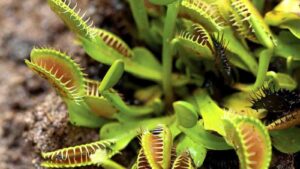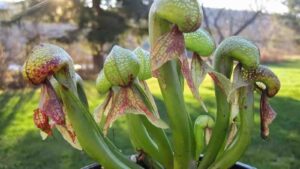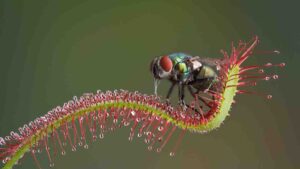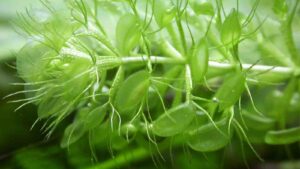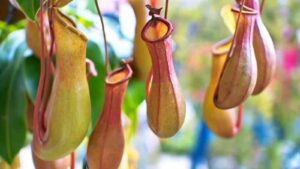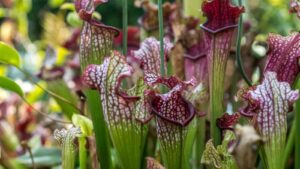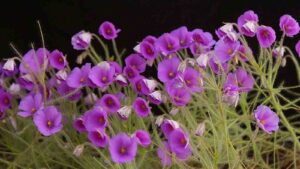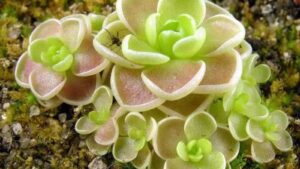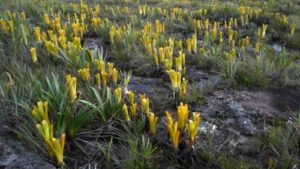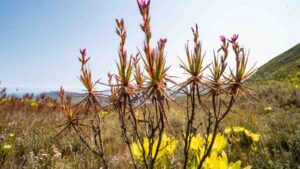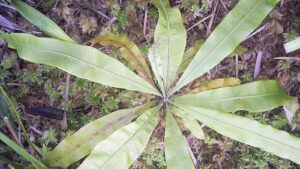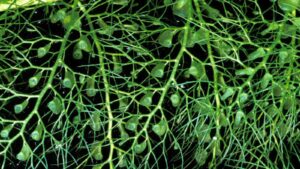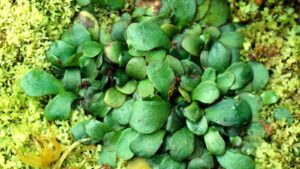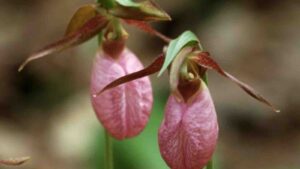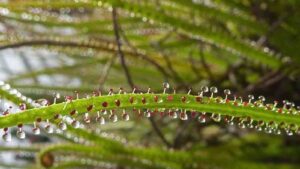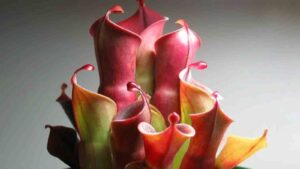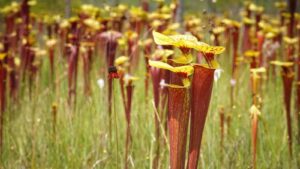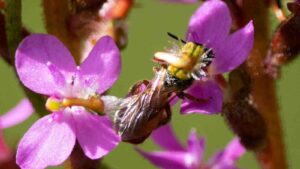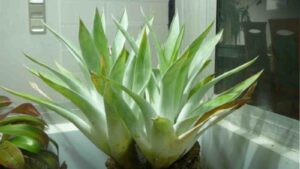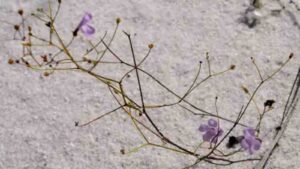Top 20 carnivorous plants that eat animals
Summary
Top 20 carnivorous plants that eat animals. They defy laws of nature; they are deadly plants; they will surprise you with the way they evolve to eat animals and survive in extreme habitats where other plants can’t grow. Often with […]

Top 20 carnivorous plants that eat animals. They defy laws of nature; they are deadly plants; they will surprise you with the way they evolve to eat animals and survive in extreme habitats where other plants can’t grow.
Often with leaves that move in surprising ways, carnivorous plants grapple up insects, and the very largest can even kill sheep.
From the misty jungles of Asia to the summits of Venezuela, you’ll find dangerous plants that are starved of nutrients, ready to prey on animals. Here we present the top 20 carnivorous plants that eat animals.
Video: Top 20 carnivorous plants that eat animals
The Venus fly trap
Also known as Dionea muscipula, the Venus fly trap is among the predatory plants that will eat you. It catches its prey mysteriously without special equipment. This green monster grows in the humid temperate climates on the Atlantic coast of the USA.
This plant seems to have its own mind; it knows the difference between a living creature and something else, and when an insect is caught, the trap remains closed for the food to be completely digested. By the way, this wonder plant can be purchased in flower shops for house decoration and garden and getting rid of annoying insects.
Cobra lily
Like other carnivorous plants, it grows in places with very poor soil nutrients and other sustenance means. The cobra lily is actually a lily and not a cobra. Its name is derived from its snake-like appearance, and the similarities don’t just end there; just like a snake, it prefers its food to live.
It’s quite an ingenious plant that not only entices insects with sweet secretions to slip down its wall but also has numerous false exits. Once inside, the insect is broken down by the digestive fluids, and the plant absorbs the nutrients.
Video: Top 20 carnivorous plants that eat animals
The sundew
This European insectivorous plant is also known as drosera. There are about 130 species of drosera known to science. It’s easily noticed during the summer thanks to its small white flowers growing on long flower stalks. It has hairy leaves that release liquid-like dangerous glue and digestive enzymes.
Insects are attracted by the glue and trapped by the hairs on the leaf surfaces; the enzymes then begin digesting the prey. Undigested food later falls on the ground.
The leaves then take the usual form, the hairs are covered with sticky juice, and a new hunt begins.
Water wheel plant
This undoubtedly ruthless, magnificent carnivorous aquatic plant uses a trap to eat small water vertebrates. The plants have six inches long free-floating stems and leave traps of about 2-3 millimeters. The traps are attached to the air chamber of the stem, which allows it to float.
The two parts of the trap have the ability to slam sharply like a still trap. The outward-directed traps are covered with thin hairs that close up in a millisecond when a victim is closer. It behaves like it has its own brain.
Tropical pitcher
From the nepenthene class, the tropical pitcher is among the different types of pitcher plants that create some of the largest carnivorous plants in the world. The giant pitcher inhabits the tropical forests in Malaysia, China, and Indonesia. It’s also called a monkey cup because researchers noticed monkeys often drunk rainwater from it.
This nepenthes is well designed to catch unsuspecting insects and small vertebrates. The pitcher’s inner walls have sweet nectar and wax-producing glands; nectar lures the prey while smooth wax slides them in. The fluid absorbs and digests the food, and the plant ingests the nutrients.
Trumpet pitcher
This pitcher belongs to the Surracenia family commonly found in America. It has bright flowers and leaves decorated with capillary lines. It’s envelope-like leaves secret sweet juice that lures insects onto their trap.
Surracenia is a plant that eats insects in a canning way. The plant’s leaves are covered with hairs that only allow insects to move in one direction.
The leaves have a funnel shape that prevents rainwater from entering the plant and ensuring digestive enzymes are not diluted. Once trapped, the prey simply dissolves in the juices, and the plant absorbs the produced nutrients.
Byblis
This handsome green predator inhabits northern Australia and south of New Guinea. It’s also called the rainbow plant due to the flashy appearance of its mucilage-covered leaves on a sunny day. The surface of its narrow, long leaves has glands that produce sweet juice and digestive enzymes. Similar to other insect-eating plants, plant-eating insects and small animals are trapped here.
The aboriginal Australians believed the byblis could even trap and digest a person, but even after this story, they were not afraid of using the byblis leaves as a source of glue.
Butterwort
Similar to the sundew habitat, you can find this green predator also called the Pinguicula. It has large tapered leaves covered with glossy glue-like mass. The butterwort’s hunting process and nutrition are similar to the sundew. Insects mistake the glossy glue-like mass for water; they then stick on the mass and are wrapped inward for the digestive secretions to digest the prey. The plant absorbs the attained minerals, and the leaves unfold, waiting for new guests. There are about 80 species of these plants that eat insects in America, Europe, and Asia.
Brocchinia reducta
Just like animals and humans, plants also have families; Brocchinia reducta belongs to the Bromeliad family together with the pineapple. It has long, slender pitches that reflect ultraviolet light that attracts insects. Like many others on this list, Brochinia releases a sweet smell that is irresistible to an average bug, and that’s how this dangerous plant ends the lives of insects in Venezuela, Columbia, and Brazil. Initially, botanists didn’t know this harmless-looking plant was a carnivore until recently, when they discovered it has digestive enzymes associated with deadly plants that eat animals.
Roridula
Native to South Africa, Roridula is a simple carnivorous plant but with a twist. It has sticky leaves like the sundew but does not have digestive enzymes. The Roridula captures insects and leaves the task of digestion to Pameridea roridulae, a bug species with which they have a symbiotic relationship.
So how does the Roridula really benefit? Well, the Roridullae absorb and digest the insects and release nutrient-rich excretions, which the Roridula later absorbs. Do you think this plant is evil by trapping food it doesn’t eat? Well, you let us know.
Triphyophyllum
This is the largest carnivorous plant native to Ivory Coast, Sierra Leone, and Liberia. It’s also called Liana. Triphyophyllum’s most distinguished feature is its remarkable size; it boasts of long twinning stems that are only 4 inches wide and nearly over 160 feet long. These extraordinary measurements make it the largest carnivorous plant in the world.
Despite their ability to trap humans, very little is still known about this plant, and scientists are still trying to determine what it prefers to eat. However, it can still eat small insects.
Read More: Deadliest Animals on Earth that look completely harmless
Bladderwort
This is a free-floating plant with no roots but has flowers and a rigid stem. The bladderwort genus contains around 220 widely distributed species. It’s also called the Utricularia.
Bladderwort is the only predator that uses a bubble trap. The underwater bubbles and leaves have small surface traps called the triggers. The trigger hair sends a signal when the prey touches it; the bubble then opens and pulls in the prey along with the water. Bladderworts can only trap and digest small prey like protozoa; it’s dubbed the fastest plant in the world.
Genlisea
Unlike the other plants on the list, the Genlisea or corkscrew plant doesn’t hunt for insects; its main diet consists of protozoa and other microscopic animals, which it attracts and digests using its specialized leaves that grow under the water. The underwater leaves that look like roots are long and pale. This poisonous plant also has another batch of normal-looking green leaves that sprout above the ground and are used for photosynthesis.
It is found in the semi-aquatic regions of Africa and both central and south America.
The Moccasin plant
Originally discovered in Southwest Australia, the moccasin plant has all the features of a plant that eats meat. It has a sweet scent that attracts insects, luring them into its moccasin-shaped pitchers, where the unfortunate insect is slowly eaten and digested. To further confuse its prey, the moccasin pitchers are translucent, which makes bugs knock themselves silly as they try to escape.
Moccasin is an unusual plant because it’s more related to flowering plants than carnivorous plants. But again, some nature surprises can’t really be explained; we just sit and enjoy.
Dewy pine
This is definitely not a pine. Scientifically known as Drosophyllum lusitanicum, it is the rarest carnivorous plant that grows on earth. It is indigenous to Spain, Portugal, and Morocco. It grows mainly in infertile acidic soils.
Just like other dangerous plants that can eat animals, its leaves are modified to trap prey. The mucilage-covered leaves produce a sweet scent that attracts and traps its prey. The digestive enzymes then break down the insects, and the leaves absorb nutrients.
Despite its mucilage-covered leaves, Dewy pine thrives in dry areas, thus making it ecologically rare.
Heliamphora
is commonly found in Venezuela, with few in western Guyana and northern Brazil. It is a carnivorous plant with modified leaves that are fused into a tubular shape. Similar to the trumpet pitcher, it also has mechanisms for attracting, trapping, and digesting insects. Heliamphora’s modified leaves also control the amount of water that gets into the small pitcher, hindering the dilution of digestive enzymes. Though not commonly known, Heliamphora typically feeds like the trumpet pitcher; it’s just like the other giant plants that eat meat.
Yellow pitcher
Like the trumpet pitcher, the yellow pitcher also belongs to the sarracenia family. This variety is considered one of the tallest pitcher plants in the world. It has pitcher-shaped leaves with sweet-smelling nectar, which primarily it uses to attract insects, trap them in, and eventually digest them alive. Unlike other pitcher plants, the yellow pitcher is easily distinguished from its distinct yellow-green color. Owing to its tall size, the yellow pitcher is among the giant plants that eat insects.
trigger plants
The name says it all. The trigger plant’s stylidium species is a susceptible carnivorous plant easily triggered by any insect or object landing on its flower column. This plant genus has over 130 species commonly found in Australia and some in Asia. The trigger plant genus name stylidium is derived from a Greek word’stylo’ referring to the flower’s united reproductive organs. Like many other plants that eat insects, stylidium has stalked mucous plants that secrete digestive enzymes, which it uses to break down its prey.
Catopsis berteroniana
Famously known as the jungle lanterns, these penultimate insect-eating plants are native to southern Brazil and Central America. The jungle lantern is a type of bromeliad known for its iridescent yellow flower. It’s also covered with a powdery wax that makes the color more bright. The jungle lantern has an urn-like structure filled with digestive fluids where insects are trapped and digested. Despite its ability to digest insects, scientists still argue whether this plant is a true carnivore.
Read More: 20 Shockingly Large Animals That Actually Exist
Philcoxia minensis
To sum up our list today is philcoxia mimesis, a worm-eating plant endemic to the Brazilian Savannah regions. Imagine you are a worm underwater looking for a place to land; you finally sport a lovely leaf and try to land on it. In a twinkle of an eye, you get trapped and have no other way out of it. This poisonous plant with underwater leaves, about the size of spine heads, traps and digests its unsuspecting prey and uses the acquired nutrients as fertilizer for the soil.
Which plant is the scariest? Have you ever seen any of them in real life? Let us know in the comment section.
